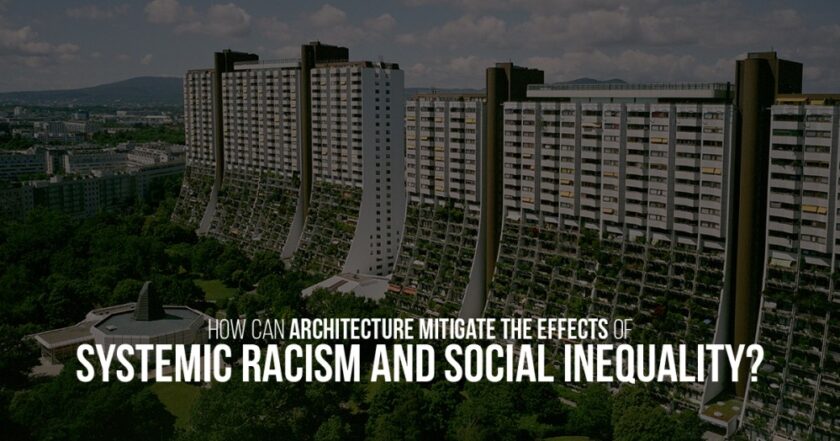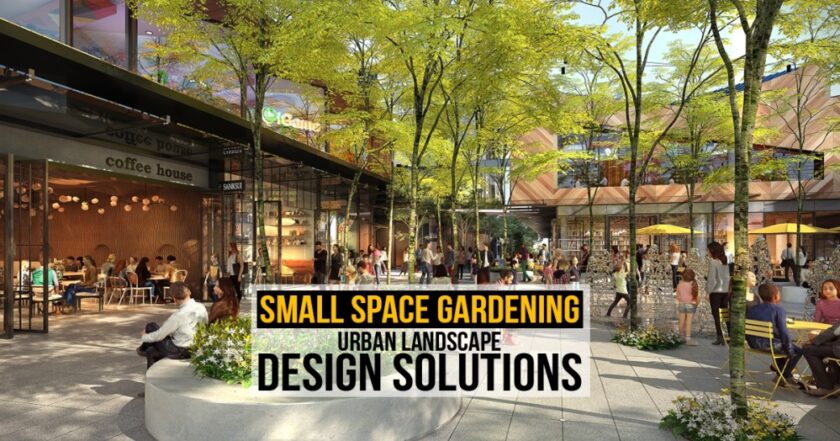Architecture is an important reflection of society and has the potential to alter systemic injustices and social inequities through design and planning inclusiveness. Equity, accessibility, and representation directly contribute to built environments, making them instruments for social justice and equality. Such design modes address historical inequalities, specifically in access to housing, education, and public space, through the examination of systemic patterns and the creation of eco-justice spaces.

Understanding Systemic Racism and Social Inequality in Architecture
Many of the urban planning and architectural practices embed systemic racism and social inequality, most of which have been adopted under the influence of colonialism and segregationist policies. Redlining in America, for instance, denies a marginalised population the right to own property and has left many long-lasting scars in terms of wealth accumulation and social mobility. The apartheid planning of the South African country is no different when integration is concerned; rather, it has been built to segregate communities based on one’s race. These legacies go on and further their return in the urban landscape and beyond that, globally, through zoning, urban sprawl, and inequitable infrastructure development.

When used consciously, architecture can tear down such structures. One can also socially create planners, architects, and urban designers to foster equitable opportunities through space and promote community connectedness.
Designing Equitable Housing Solutions
The affordable housing deficiency burdens marginalised communities more than others, and this contributes to a cycle of poverty and exclusion. One of the ways to reduce this effect is through mixed-income housing developments, e.g., as evidenced by the model of social housing in Vienna, where affordability is prioritised over anything else.

Reclaiming Public Spaces for Inclusion

Public spaces have an important role in social cohesion and in combating inequality. This involves encouraging social inclusion and incorporating design into public spaces to revive neglected areas as places of vibrant interaction, communication, and commerce. One such project was redeveloping the well-known Minhocão highway into a pedestrian-friendly urban parkland in São Paulo. This has turned a formerly oppressive piece of infrastructure into a space oriented towards community living that encourages interaction among very varied groups.
Similar to that is the Dequindre Cut Greenway in Detroit where it shows how public space actually could be approached and established as a benefit to an under-represented community. The project now converts an abandoned rail corridor into a safe, welcoming pathway for pedestrians and cyclists. It brings to the community recreational and cultural space historically denied entry to such amenities.

Addressing Educational Inequalities Through School Design

Education is essential to the bridging of social divides. Schools designed with equity in mind can empower marginalised communities and address the inequalities in education. The Aga Khan Academy in Mombasa, Kenya, epitomises this. It stresses sustainable architecture while providing spaces for collaboration and learning among students from varied backgrounds. The need-based scholarship scheme and inclusiveness promise admission to those who would otherwise be denied in quality education.

It is the kind of approach found in India using the Riverside School Ahmedabad-based one that marries a pedagogy with a streamlined design to create avenues to quality education for many, if not all, students. Such child-friendly spaces encourage interaction, creativity, and inclusiveness so that they offer an environment that has potential across socio-economic divides.
Enhancing Access and Mobility
The absence of equality in transportation acts as a reinforcement to the system, especially in the case of marginalised groups living in urban areas. Architects may do architecture and design access to transport systems wherein affordability matters as also does connectivity. The Bus Rapid Transit (BRT) developed by Brazil, Curitiba, enabled a level of access to a network that would ensure a reduction in travel time and cost for the underserved population. The emphasis that a city places on equality in access to transport is one clear demonstration of how deliberate urban planning can fight socioeconomic disparities.

Moreover, inclusionary transport nodes such as those in Singapore embody elements like childcare facilities, clinics, and community centres. Such embodiments enrich the purposes for which public infrastructure can be used by all residents regardless of income or status.

Representation of Marginalised Voices in Design
Representation is a key building block in addressing systemic racism and inequality in architectural design. Historically, the voices of marginalised sections were always silenced when it came to designing or planning processes. Engaging them is crucial, as the reality of findings reveals that seeing the built environment reflects their identity and needs of particular cultures.

An example of this precept would be the Freedom Park in Pretoria South Africa. The park commemorates the diverse cultures in the country but also pays homage to its struggle for achieving equality. The voices of the local community played an important role in making this park, which is now a space for collective reflection, healing, and unity.



A similar exercise is found in Australia, where the design of Uluru-Kata Tjuta Cultural Centre integrates traditional knowledge and practices of Indigenous peoples. Its architecture entails the spiritual meanings ascribed to this land by the Anangu people, demonstrating the way in which an inclusive design can resonate with marginalised voices.
Creating policies for the fostering of inclusivity in development
Government policies and institutional frameworks are very much ubiquitous within the enablement to address extenuating conditions such as systemic racism and inequality within institutional architecture. Policies that promote inclusive and affordable housing quotas, and provide opportunity for participation by communities in urban spaces to make policy frameworks accessible, must be viewed in the context that equity has such a place as a foundational principle for design.


Copenhagen’s Finger Plan, for example, merges urban with green spaces to serve access to nature and recreation for all, thereby improving quality of life and reducing differences in access to public resources.
Towards a Just and Inclusive Future
Architecture can redefine societies and deconstruct the structural barriers that maintain systemic racism and social inequality. With affordable housing, accessible public spaces and transportation, and culturally representative urban design, the built environment is made a tool for social justice. Of course, achieving this vision requires collaboration among architects, planners, policymakers, and, most importantly, communities themselves.
It is to such an extent that architecture has turned from considering beauty as an end into one that seeks to address pressing issues in society. Such implications indeed create a chance for a new and fair future where the built environment promotes opportunity, empowerment, and unity.
Citations:
Member center (no date) The Ugly History of Redlining: A Federal Policy ‘Full of Evil’ – Articles. Available at: https://www.tba.org/?pg=Articles&blAction=showEntry&blogEntry=85873 (Accessed: 23 November 2024).
“Experiencing the culture of Sao Paulo” (2023) Blueprint Travelers – Travel Site – The world travel tips, resources, and guides to inspire you to plan, execute, and experience the best world travel for you. Blueprint Travelers, 23 December. Available at: https://www.blueprinttravelers.com/travel-blog/experiencing-the-culture-of-sao-paulo/ (Accessed: November 23 , 2024).
Samsuri, S. (2023) Persons with disabilities markedly more satisfied with Singapore public transport in 2022: Survey, TODAY. Available at: https://www.todayonline.com/singapore/persons-disabilities-public-transport-satisfaction-increase-survey-2106751 (Accessed: November 24, 2024).

As an architecture and interior designer, I am passionate about creating spaces that inspire and delight those who inhabit them. With over a decade of experience in the industry, I have honed my skills in both the technical aspects of design and the art of crafting beautiful, functional spaces.
After earning my degree in architecture, I began my career working for a prestigious firm where I was exposed to a wide range of projects, from commercial buildings to high-end residential properties. During this time, I developed a keen eye for detail and a deep appreciation for the importance of form and function in design.
In recent years, I have struck out on my own, founding my own design studio where I have been able to further explore my passion for interior design. I believe that a well-designed space can transform the way people live and work, and I take pride in working closely with clients to understand their needs and create spaces that exceed their expectations.
Throughout my career, I have been recognized for my innovative and creative approach to design, and have been honored with a number of awards and accolades. When I’m not working on design projects, you can find me exploring the outdoors or seeking inspiration in the world around me.




